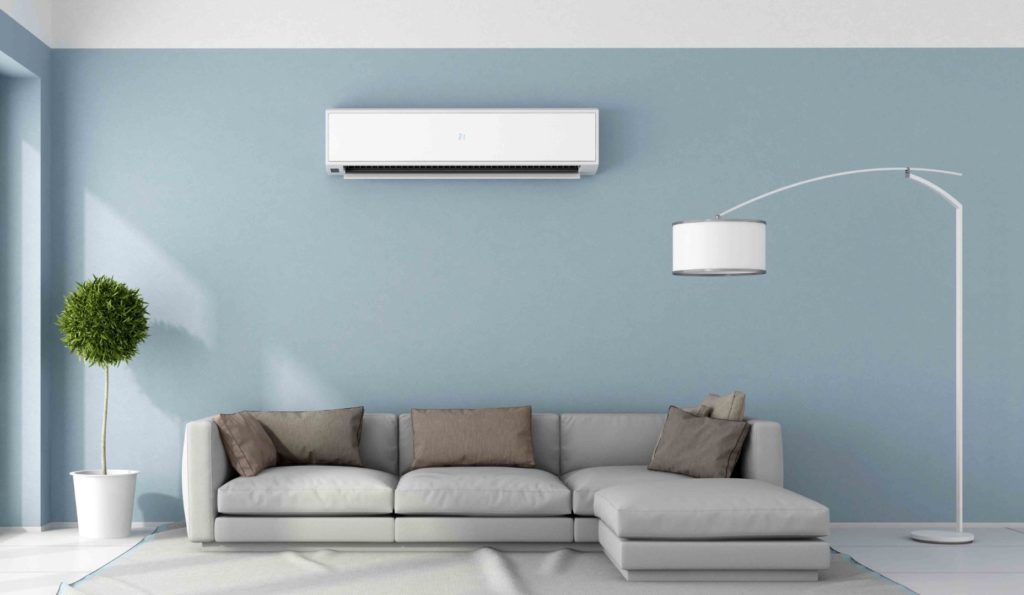Mini split air conditioning systems have been popular in Europe for quite some time, and their popularity quickly expanded to other countries as HVAC systems evolved. They now offer an excellent alternative for cooling in hot regions such as India and heating in colder climes further north. Mini split systems have recently become a popular application throughout the United States.
They have many different applications that homeowners can benefit from, providing a combined heating and cooling solution for individual rooms in the house. And, to make it better, these systems are also separate from the house’s main heaters and air conditioners. The system also helps homeowners save money on utility bills, giving an environmentally friendly option to stay cool during the summer days.
However, as with most HVAC systems, there are some disadvantages that can put you off from buying a mini split ac for your home. These systems aren’t ideal for every home or business, though. So, read on to learn more about the pros and cons of getting mini splits in Phoenix.
How a mini split air conditioner system works
Mini splits are systems that allow you to control the temperatures in individual rooms. They use two parts to heat or cool the rooms you use them in: a compressor or condenser that’s set up outside and an indoor air unit called an evaporator. Mini split systems are considered to be ductless as well, only needing a three-inch hole for the conduit to fit through. This conduit also houses key parts for the system to work, including a condensation drain line that links the indoor and outdoor units.

The pros of mini split air conditioning systems
Flexible and versatile
Due to the evaporator’s smaller size, mini split systems are a great option to help provide heating and cooling for small homes or individual rooms. The evaporator unit can also be placed on the floor, ceiling, or walls, leaving you the ability to enjoy the layout of your rooms as you seem fit. Additionally, the evaporator units tend to be about two and a half feet wide, a foot tall, and seven to nine inches in depth, making it even easier to suit your house.
Zoned Heating and cooling
Mini-split air systems can be zoned, depending on the number of rooms you want the air conditioners in. Some models can have up to four evaporators connected to a single condenser, and each indoor unit can be controlled with its own thermostat. This allows you to be able to only use the system in the rooms you place the units in.
Environmentally friendly
Traditional air conditioners often face a direct energy loss due to small holes, gaps, and cracks along the ducts. The air traveling through leaks though often causes higher energy bills. Additionally, when being used, traditional systems use more energy in an effort to cool the entire house at once. When it comes to central air conditioners, duct leaks account for approximately 30% of energy use.
Mini split air conditioners, on the other hand, do not need ducts to distribute air throughout the home. Instead, the technology distributes heat directly to the space you’re in, reducing energy loss. Combined with the ability to only use a single unit to cool or heat the room as opposed to the entire house, the mini split ac saves about half the energy a traditional air conditioning system does.
The cons of mini split air conditioning systems
Can be a costly investment
Depending on what size and cooling capacities your house needs, one of the biggest disadvantages a mini split ac has is its cost. On average, these systems can cost about $1500 to $2000 per ton of cooling. This translates to about 12000 BTU (or British Thermal Units). The overall cost is about 30% more than the average central cooling system, though not including the ductwork that’s also needed. The cost is also almost twice the cost of a window unit of the same capacity and strength.
Installation calculations need to be exact
When it comes to installing the air conditioning system, you need to hire a dependable contractor to do the work. While there is a degree of flexibility when it comes to where it’s placed, an incorrectly placed or wrongly sized indoor unit can lead to the unit frequently turning itself on and off – otherwise known as short cycling. An oversized system may cost even more than you need for your home and increases the amount of energy used to cool rooms. This also doesn’t provide the needed humidity control or temperature for a home in desert climates.

May need external building modification
Since the system needs an outdoor condenser and compressor unit to work, mini split systems may not be ideal for people that rent a house or live in a condo. To connect to the indoor unit, the power cables need to run through the walls. This, naturally, means that the wall closest to the outdoor unit needs to be drilled through. On top of that, the air conditioner needs its own power source to run effectively. Depending on what the property owner or the renting contract says, any external modifications to the building or the surrounding property are likely to be forbidden.
Conclusion
There are many more pros and cons you need to consider before buying a mini split air conditioner for your home or business. These systems are a good investment overall, providing both heating and cooling separate from the building’s main central system. It also provides efficient eco-friendly control for a number of individual rooms. Installing a mini split system not only ends up saving you money after the initial costs, but it also gives everyone the comfort of being able to control their room’s temperature. However, be sure to do your research before committing to making such a big investment. Always look into what best suits your building and what HVAC systems you may already have.






